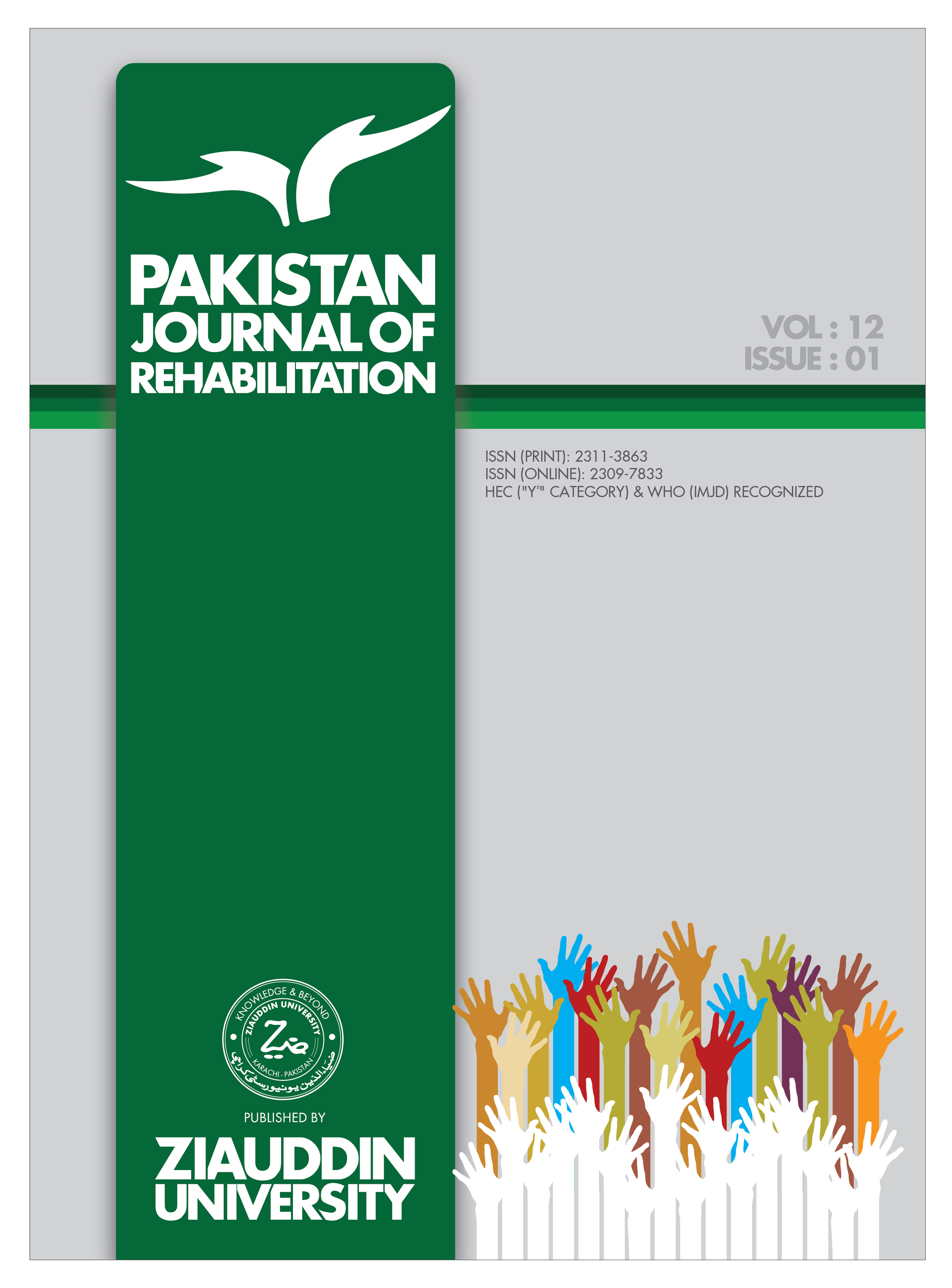TELETHERAPY- AN INNOVATIVE WAY OF TREATMENT IN THE FIELD OF OCCUPAIONAL THERAPY IN PAKISTAN
Keywords:
Teletherapy, occupational therapy, i-PiCS, COVID-19, rehabilitation, allied healthAbstract
Teletherapy is an emerging and enlarging tool for having treatment in occupational therapy in rehabilitation sciences among occupational therapists all over the world mainly in Pakistan, especially during the era of COVID-19. A lot of studies have been done already highlighting the paramount of teletherapy around the world but it is a new rising mode of treatment in Pakistan coming to light. Therapists and Patients throughout the country making the most of this treatment way respectively and hence this method of treatment while using of technologies is highly being appreciated.
The aim of this study is to foster and encourage the use of this technology in third-world countries like Pakistan. It is the most used treatment tool during COVID-19 among occupational therapists all over the country and is highly appreciated in order to cut-down the negative circumstances of a one-to-one session in which therapist and patient is in highly close contact to each other. This course of action has advocate the on-going rehabilitation treatment and has kept away people from COVID-19 expansion to the most extent.
In this study, a 5years old boy was included with an under-diagnostic process within the umbrella term of genetic disorder. Having genetic disorder, his sessions were taken in tele-clinic using video call technology during COVID-19. In this process, AOTA Occupational Therapy Tele-Health Decision Guide, AOTA Occupational Profile Template, AOTA Advisory Opinion for the Ethics Commission Teletherapy, i-PiCS-Internet-Based Parent-Implemented Communication Strategies Program, and modeling strategy were followed.
References
Brown T, Lynch H. Remote learning, telehealth, tele‐early intervention, school‐based telerehabilitation: The impact of the Covid‐19 pandemic on children's occupational repertoires and routines. Australian Occupational Therapy Journal. 2022; 69(2):113-116.
Kirubel Biruk and Eden Abetu, Knowledge and Attitude of Health Professionals toward Telemedicine in Resource-Limited Settings: A Cross-Sectional Study in North West Ethiopia. Volume 2018, Article ID 2389268, p.1: (4-9).
Kirubel Biruk and Eden Abetu, Knowledge and Attitude of Health Professionals toward Telemedicine in Resource-Limited Settings: A Cross-Sectional Study in North West Ethiopia. Volume 2018, Article ID 2389268, p.1: (9-10).
Brown T, Lynch H. Remote learning, telehealth, tele‐early intervention, school‐based telerehabilitation: The impact of the Covid‐19 pandemic on children's occupational repertoires and routines. Australian Occupational Therapy Journal. 2022; 69(2):113-116.
Dahl-Popolizio S, Carpenter H, Coronado M, Popolizio N, Swanson C. Telehealth for the Provision of Occupational Therapy: Reflections on Experiences During the COVID-19 Pandemic. International Journal of Telerehabilitation. 2020; 12(2):77-92.
Fioratti I, Fernandes LG, Reis FJ, Saragiotto BT. Strategies for a safe and assertive telerehabilitation practice. Brazilian journal of physical therapy. 2021 Mar; 25(2):113.
Fioratti I, Fernandes LG, Reis FJ, Saragiotto BT. Strategies for a safe and assertive telerehabilitation practice. Brazilian journal of physical therapy. 2021 Mar; 25(2):113.
Fioratti I, Fernandes LG, Reis FJ, Saragiotto BT. Strategies for a safe and assertive telerehabilitation practice. Brazilian journal of physical therapy. 2021 Mar; 25(2):113.
Bolt M, Ikking T, Baaijen R, Saenger S. Occupational therapy and primary care. Primary Health Care Research & Development. Cambridge University Press; 2019;20:e27.
Sarsak H. Telerehabilitation services: a successful paradigm for occupational therapy clinical services? International Physical Medicine & Rehabilitation Journal. 2020; 5(2).
Manganello J, Gerstner G, Pergolino K, Graham Y, Falisi A, Strogatz D. The relationship of health literacy with use of digital technology for health information: implications for public health practice. Journal of public health management and practice. 2017 Jul 1;23(4):380-7.
Rettinger L, Klupper C, Werner F, Putz P. Changing attitudes towards teletherapy in Austrian therapists during the COVID-19 pandemic. Journal of Telemedicine and Telecare. 2021; 1357633X2098603.
Brown T, Lynch H. Remote learning, telehealth, tele‐early intervention, school‐based telerehabilitation: The impact of the Covid‐19 pandemic on children's occupational repertoires and routines. Australian Occupational Therapy Journal. 2022; 69(2):113-116.
Dahl-Popolizio S, Carpenter H, Coronado M, Popolizio N, Swanson C. Telehealth for the Provision of Occupational Therapy: Reflections on Experiences During the COVID-19 Pandemic. International Journal of Telerehabilitation. 2020; 12(2):77-92.
Zahoransky M, Lape J. Telehealth and Home Health Occupational Therapy: Clients’ Perceived Satisfaction With and Perception of Occupational Performance. International Journal of Telerehabilitation. 2020; 12(2):105-124.
Carrington M, Shahidul Islam M. The Use of Telehealth to Perform Occupational Therapy Home Assessments: An Integrative Literature Review. Occupational Therapy in Health Care. 2022; 1-16.

Downloads
Published
How to Cite
Issue
Section
License
Copyright (c) 2022 Pakistan Journal of Rehabilitation

This work is licensed under a Creative Commons Attribution 4.0 International License.



